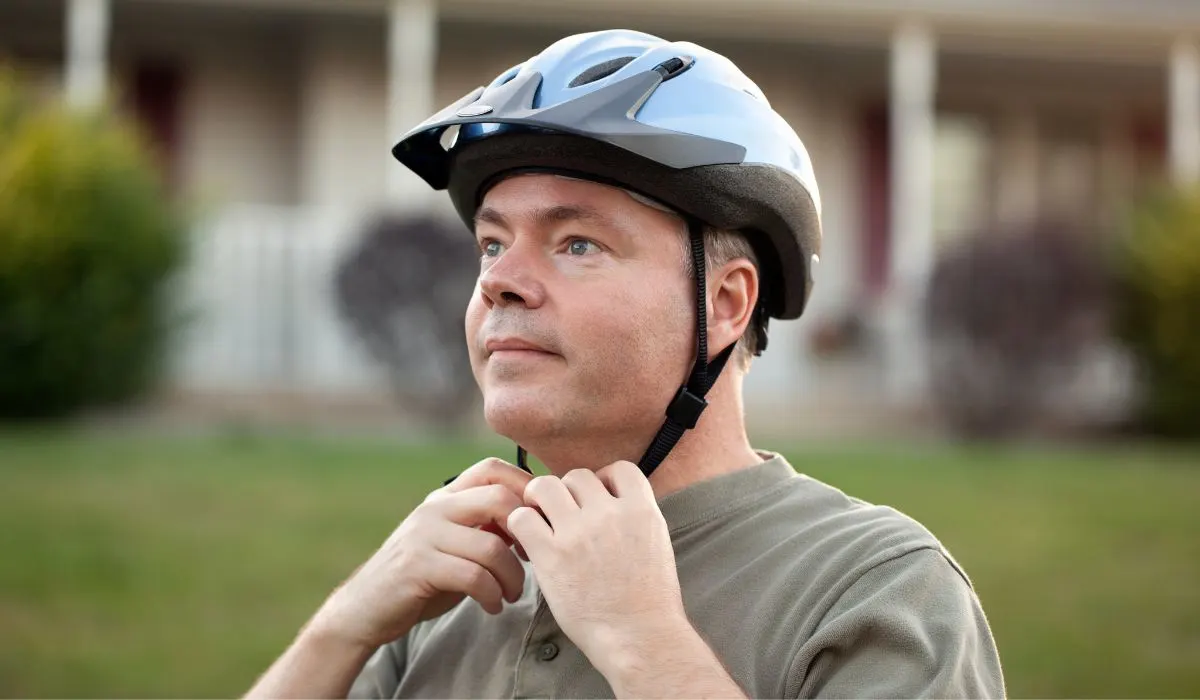
A bike helmet can prevent a head, neck, and brain injury or at least reduce its severity. However, it needs to employ a Brain Protection System (BPS). The two leading BPSs are MIPS and WaveCel. So, how do these two helmet technologies compare?
MIPS effectively protects your brain by reducing rotational impact forces. In comparison, WaveCel reduces rational and linear impact forces. Overall, the two BPS technologies provide different functions but both ensure better protection than helmets without the technology.
Helmets are like an insurance policy – they feel like a waste of money until you use them. At the forefront of innovative concussion prevention technology are MIPS and WaveCel. So, here’s the full scoop on both technologies – hopefully, our guide equips you with enough knowledge to select the perfect helmet.
MIPS vs. WaveCel Helmets
Overall, MIPS and WaveCell technologies deliver different results. There is a lack of objective testing to help determine which of these systems is more effective. However, both technologies provide better protection than helmets without MIPS or WaveCel features.
Traditional bike helmets feature Expanded Polystyrene (EPS). While these helmets are better protection than nothing, they lack the modern concussion prevention technology of MIPS and WaveCel.
NOTE: MIPS and WaveCel both help reduce the risk of head injuries and concussions.
The MIPS helmet claims to be 10-50% more effective at reducing rotational or angled impact, the leading cycle-related brain injuries. In comparison, the WaveCel helmet claims to be 48 times more effective than the traditional EPS helmet, reducing rational and linear impact forces.
A Virginia Tech University study on a helmet’s ability to reduce the head’s linear acceleration and rotational velocity indicates that MIPS and WaveCel helmets are both highly effective at preventing concussions.
With two new-tech competing technologies, you may wonder if MIPS or WaveCel is better. While the answer isn’t completely clear, we can help you find your perfect fit by providing the primary:
- objective
- functions
- advantages
- disadvantages
If you’re in a rush to head to the store for a new helmet before your bike ride, look at our quick MIPS vs. WaveCel summary:
| MIPS Technology | WaveCel Technology | |
| What is it? | MIPS is low-friction, slip-plane technology that protects the brain from rotational impact forces. | WaveCel is a Trek-engineered protection system featuring a collapsible cellular structure lining the inside of Bontrager helmets. |
| Function | MIPS slip-plane technology mimics the brain’s self-protection mechanism. It allows 10 to 15mm sliding motion to help minimize angled or rotational movement onto the brain. | WaveCel works similarly to the crump zone, absorbing impact force before it reaches the head and brain. |
| Advantages | The MIPS helmet reduces rotational and angled impact forces. MIPS is integrated into various helmet brands. | The WaveCel helmet reduced rotational and linear impact forces. WaveCel manufacturers guarantee a one-year Crash Replacement, proving the helmet’s quality. |
| Disadvantages | MIPS technology does not reduce linear impact. MIPS adds about 0.88 to 1.59oz. (25 to 45g) to the bike helmet. MIPS helmets are more expensive than EPS helmets. | WaveCel is not nearly as effective as MIPS in reducing rotational impact. WaveCel adds around 1.76oz. (50g) to the bike helmet. WaveCel technology is limited to Bontrager helmets only. WaveCel helmets are costlier than MIPS helmets. |
| Lifespan | 3 to 5 years (without a crash) | 3 to 5 years (without a crash) |
Now, let’s scratch deeper than the surface for readers interested in the detailed version of MIPS vs. WaveCel technology.

MIPS Technology Overview
MIPS Technology originated when the Swedish neurosurgeon, Hans van Holst, noticed high volumes of patients with brain injuries after suffering crashes despite wearing helmets.
With engineer Peter Halldin, Van Holst discovered that human brains handle linear (straight-on) impacts better than oblique impacts that create rotational strain.
The research birthed MIPS, a Multidirectional Impact Protection System. Tie innovative technology contains a thin, low friction layer inside the helmet, known as the slip plane.
On impact, the slip plane allows 10-15 mm of independent movement, allowing the helmet to rotate independently from your head to help reduce rotational injuries.
In theory, slip plane technology mimics your brain’s cerebrospinal fluid rotation, which naturally protects your body and brain against oblique impacts.
Due to legal reasons, MIPS claims to handle rotational impact better by at least 10%. However, in reality, extensive tests prove that most MIPS helmets provide a 20-70% improvement.
MIPS: Pros
The advantages of MIPS helmets include:
- The MIPS helmet increases safety by reducing rotational and angled impact forces.
- MIPS is integrated into various helmet brands – over 120 brands.
MIPS: Cons
The disadvantages of MIPS helmets include:
- MIPS technology does not reduce linear impact.
- MIPS adds about 0.88 to 1.59oz. (25 to 45g) to the bike helmet. So, they can be tighter and smaller due to the extra plastic slip plane.
- MIPS-equipped helmets are around 10-25% more expensive than standard EPS helmets.
- Some MIPS designs can interfere with ventilation.

WaveCel Technology Overview
WaveCel is a revolutionary safety technology created by:
- Trek’s Research and Design team
- orthopedic surgeon Dr. Madey
- biomechanical engineer Dr. Bottlang
NOTE: WaveCel is exclusively available in Bontrager helmets.
Instead of only protecting against direct impacts like standard EPS foam helmets, WaveCel accounts for actual cycling accidents with:
- twists
- turns
- angled impacts
WaveCel features a malleable yet dense lattice-like collapsible material that can absorb impact in three ways:
- flex
- crumple
- glide
As a result, the technology is 48 times better at preventing concussions than a standard EPS helmet.
WaveCel works in three steps:
- Flexing reduces initial frictional forces.
- Crumpling reduces impact forces.
- Glide: The WaveCel reduces rotational shocks by allowing your head to glide within the helmet, redirecting the energy away from your head.
A standard EPS helmet absorbs impact by cracking and changing shape. The helmet will break once your head hits the ground. Wavecel helmets include the EPS outer shell and Wavecel liner adding an extra layer of protection.
WaveCel: Pros
The advantages of WaveCel helmets include:
- WaveCel helmets reduce rotational and linear impact forces.
- WaveCel manufacturers guarantee a one-year Crash Replacement.
WaveCel: Cons
The disadvantages of WaveCel helmets include:
- WaveCel is not nearly as effective as MIPS in reducing rotational impact.
- WaveCel adds around 1.76oz. (50g) to the bike helmet.
- WaveCel technology is limited to Bontrager helmets only.
- WaveCel helmets are costlier than EPS and MIPS helmets.
MIPS Or WaveCel: Which Helmets Are Better?
MIPS helmets are excellent at absorbing rotational impact forces. However, WaveCel helmets help protect against rotational (though not as well as MIPS) and linear impact.
Therefore you can argue that WaveCel tops MIPS. However, you can’t only rely on BPS technology. You’ll need to pay attention to the helmet’s inner EPS lining and outer polycarbonate shell.

Conclusion
Consider getting a MIPS helmet if your primary goal is to absorb and reduce rotational or multidirectional impact forces during a crash. However, if you prefer to reduce rotational and linear impact, a WaveCel helmet is a better option.
WaveCel won’t offer as much rotational impact protection, but it includes the extra advantage of linear impact protection.
You might also be interested in:
